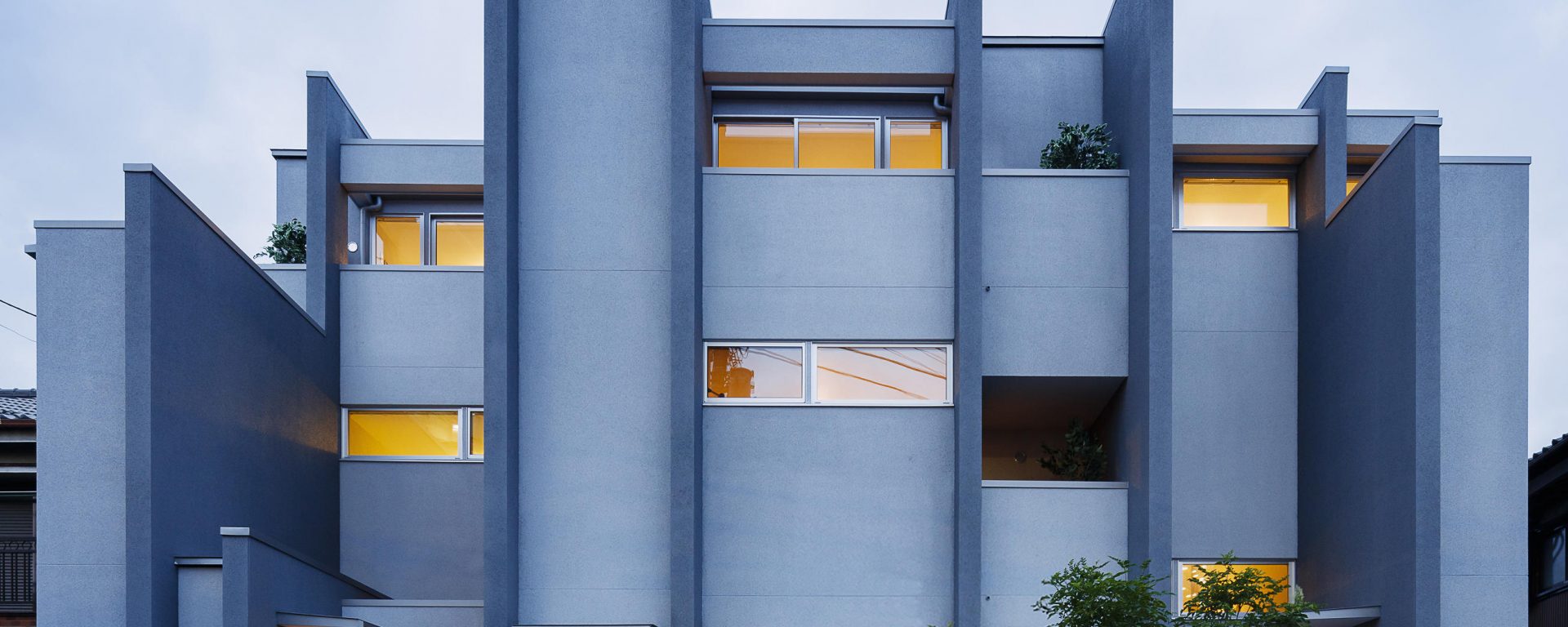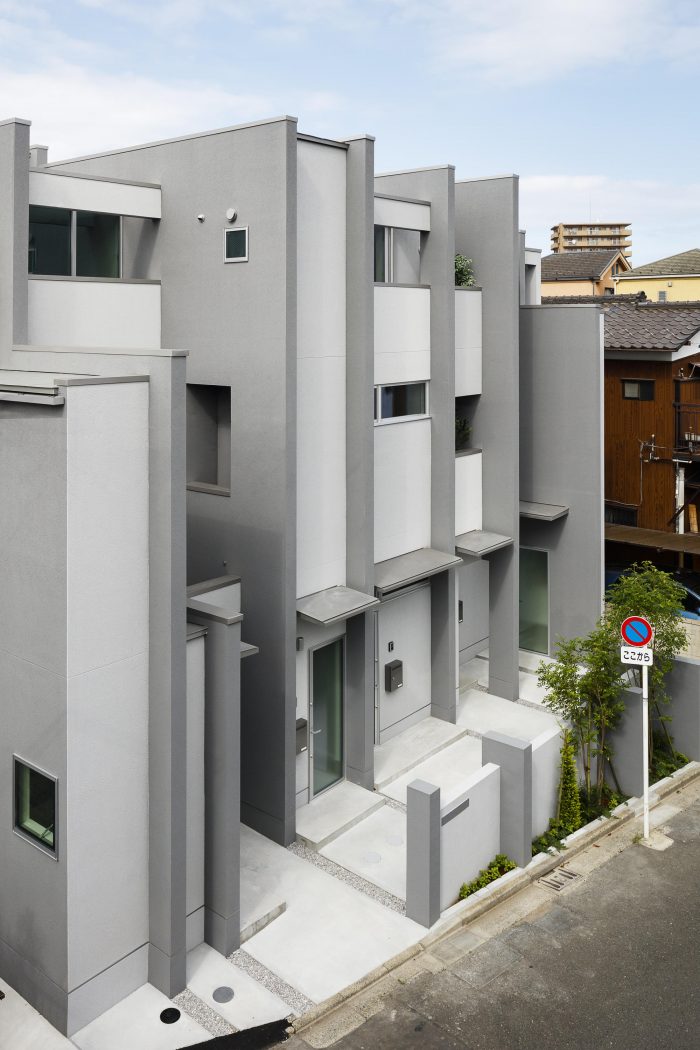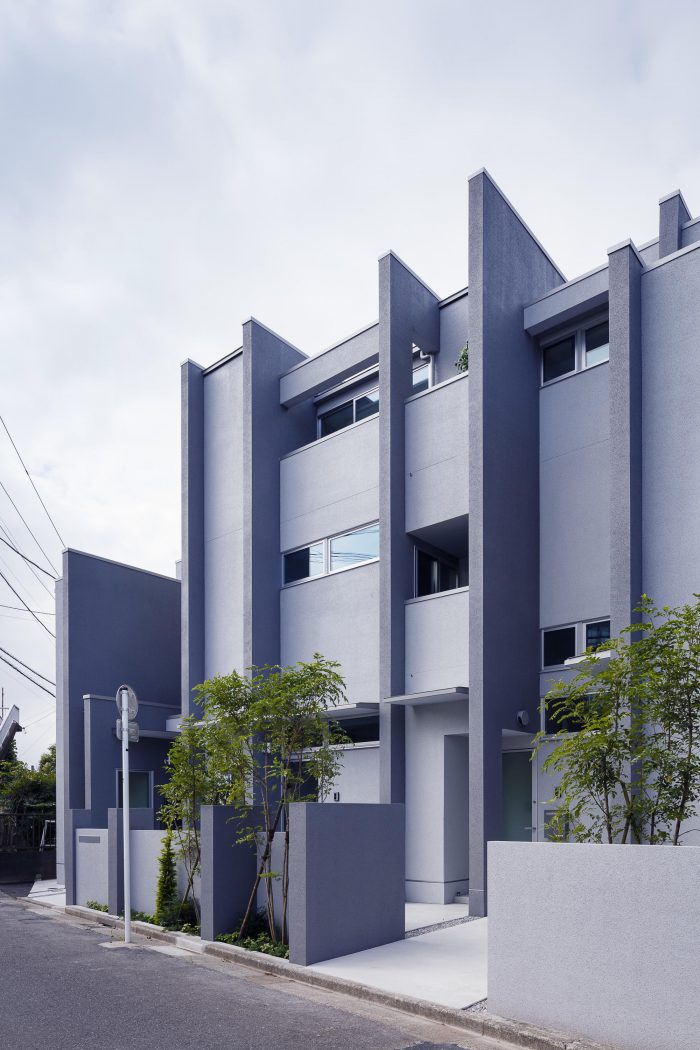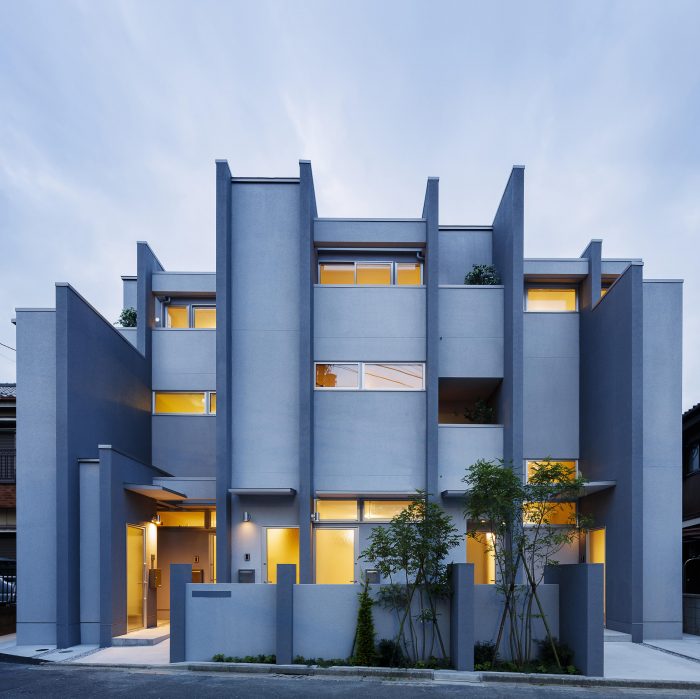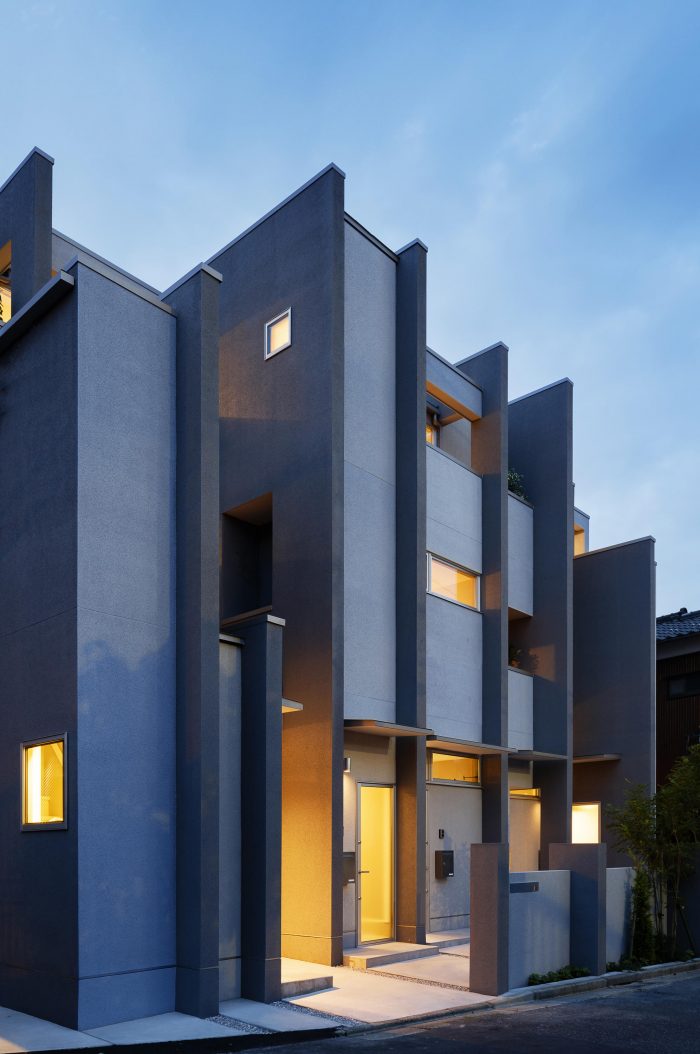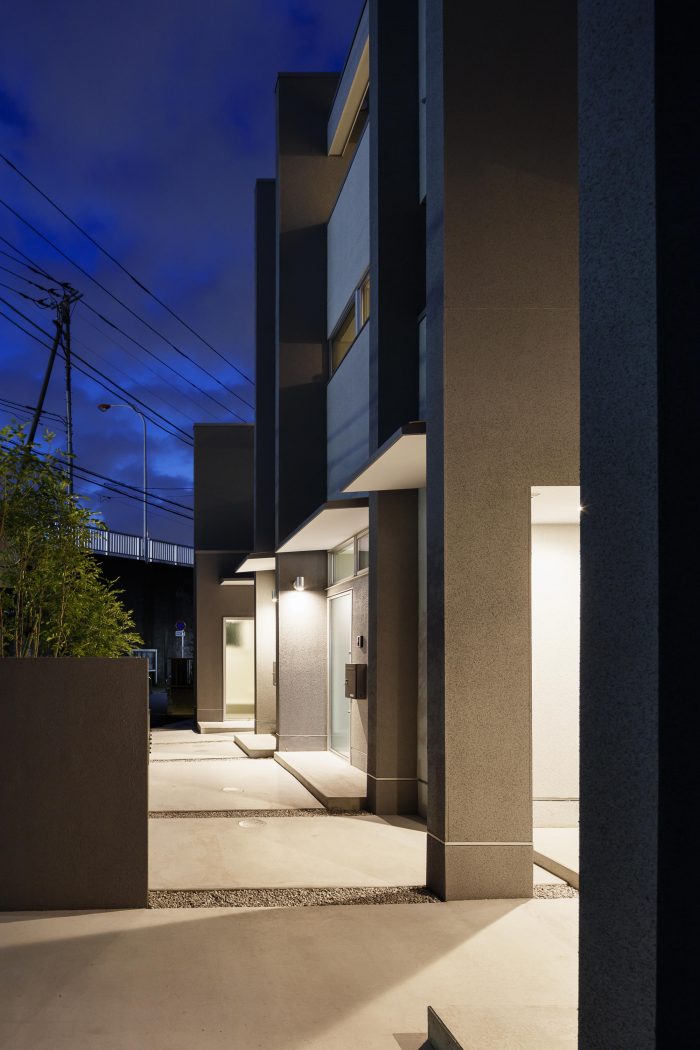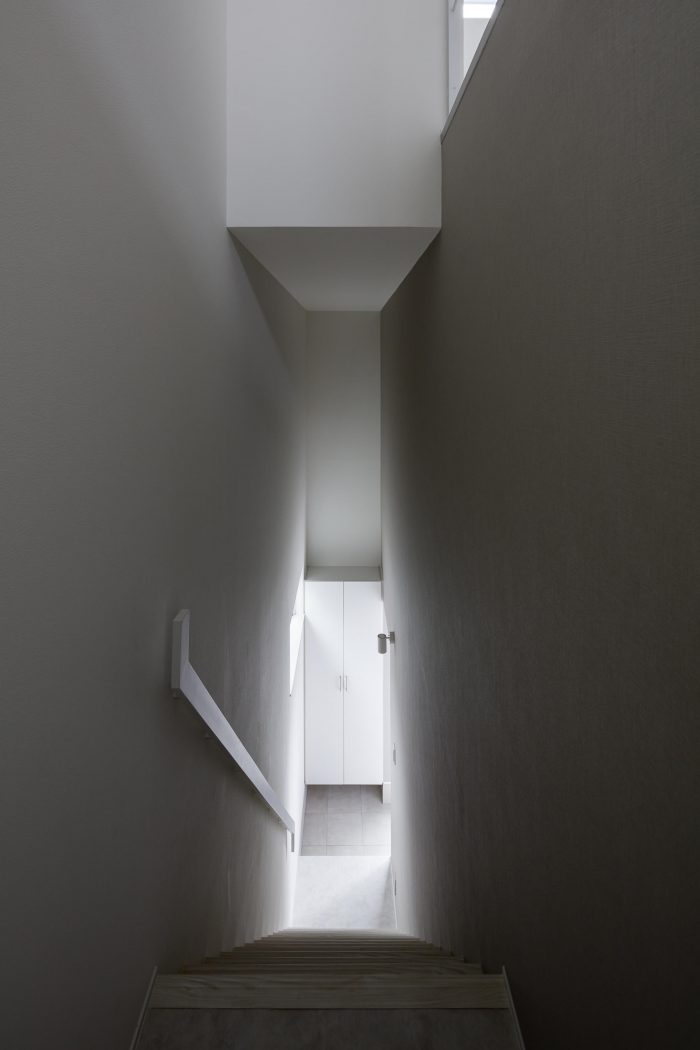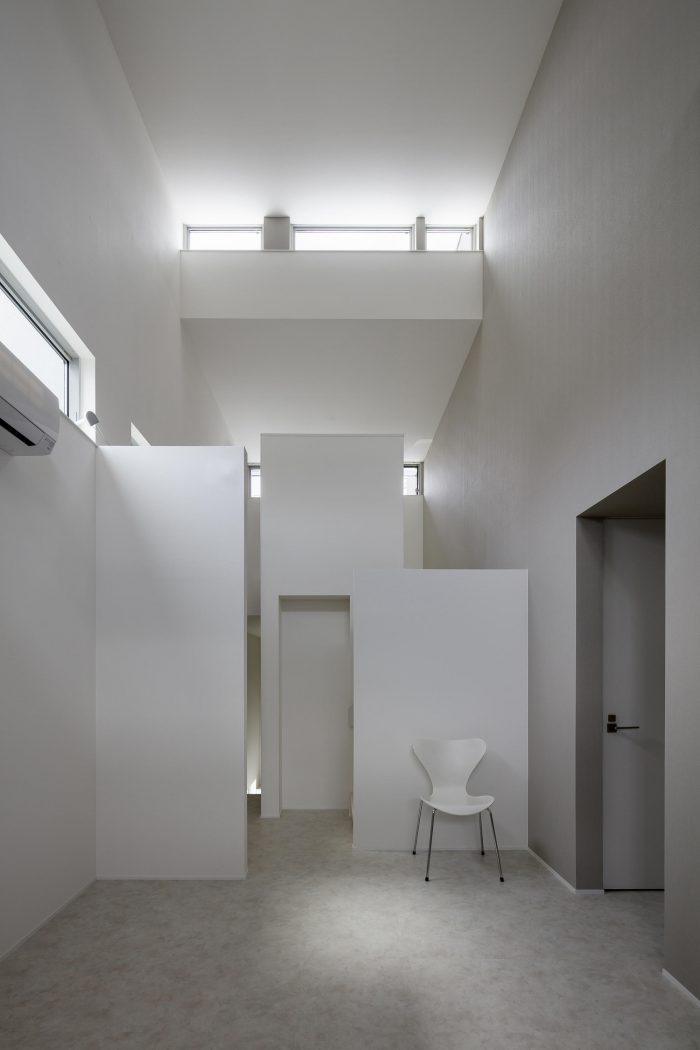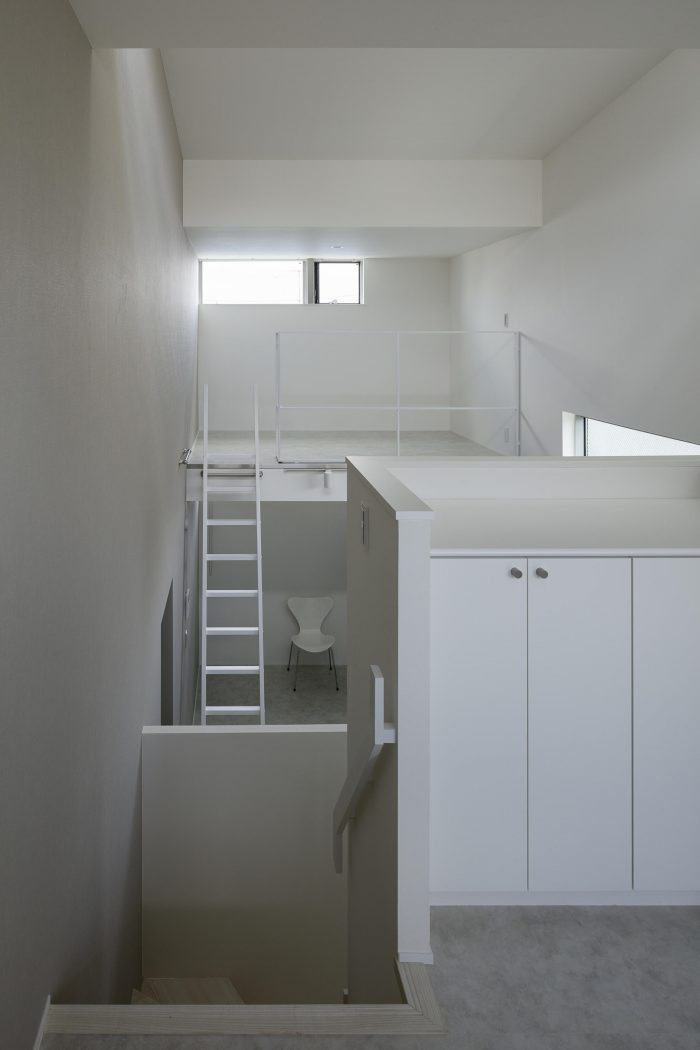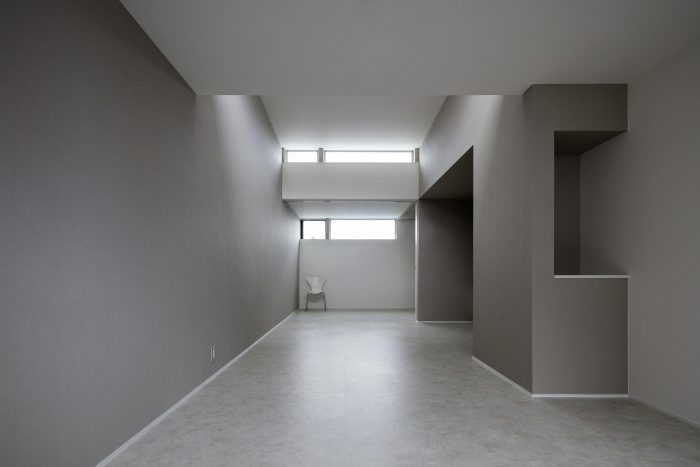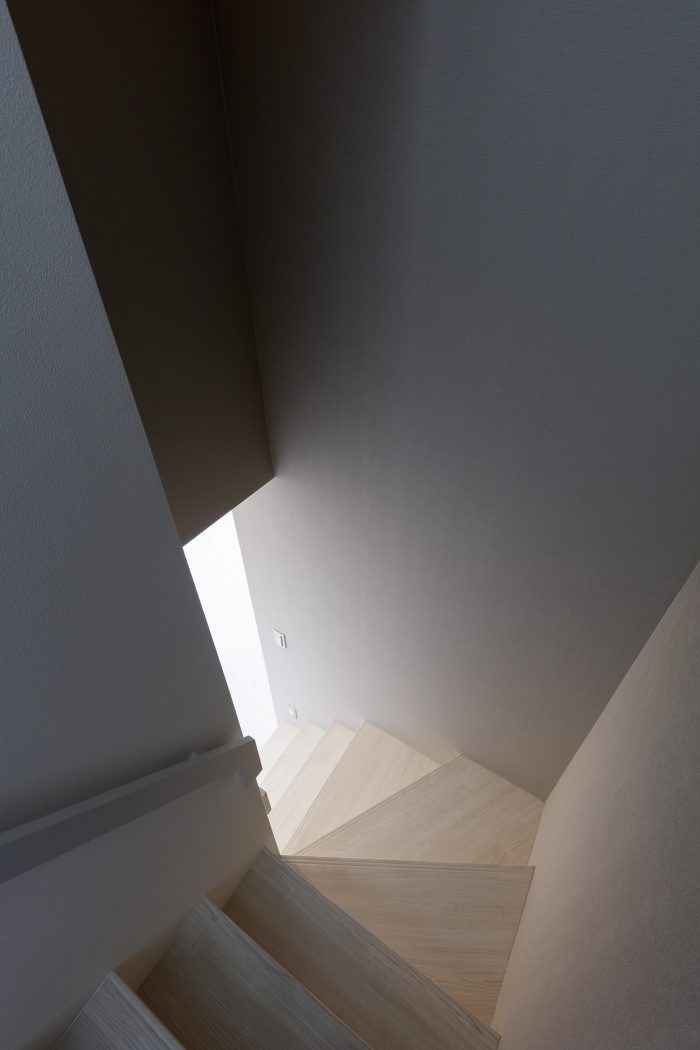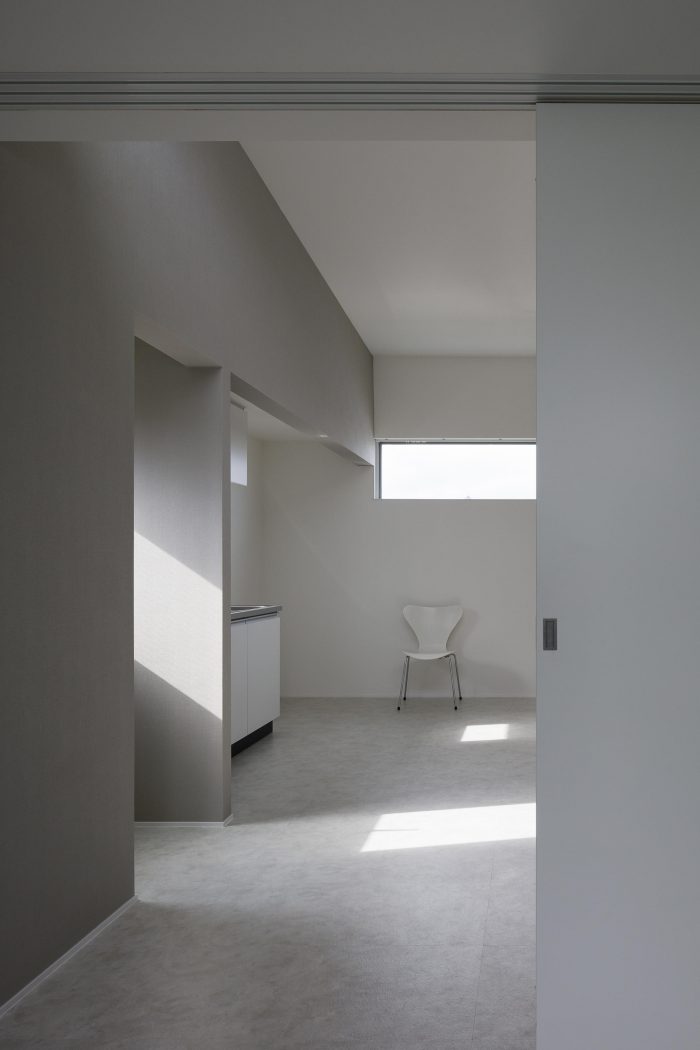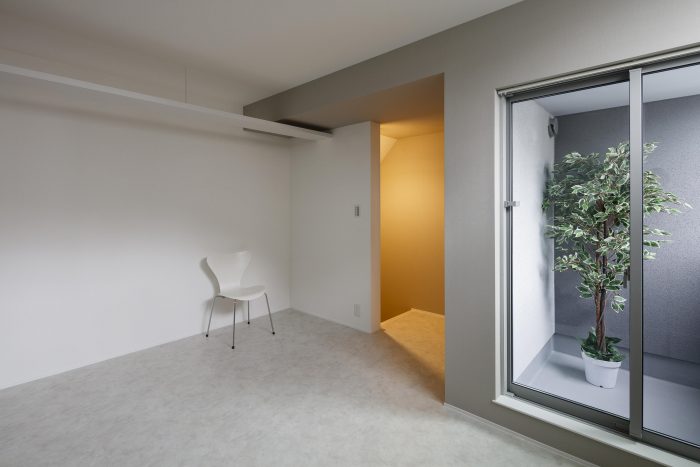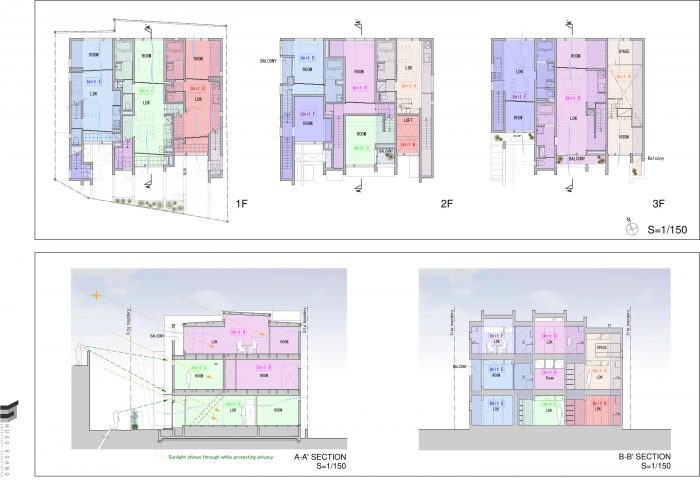这座联排别墅位于一个高密度的住宅区,围绕着空间韵律的主题设计。我们面临的挑战是创建六个三层的单元,让居民可以自由选择自己的生活方式,拥有个性和归属感,同时保持整个建筑的一致色调——换句话说,灵活地适应广泛的设计条件。基地的南侧有一个高落差,这使得屋顶和单元内部的阶梯式设计能够在需要的地方遮挡视线,并为住宅带来自然光线和通风。虽然采用了水平切片和垂直分层的复合设计,但我们成功地实现了一个统一的整体外观,突出的阴影和一组六种不同的单元。
就像一首诗,彼此呼应,永不重复,建筑中没有两个空间是相同的,但每个空间都使用相同类型的元素来回应周围环境和功能需求。整个建筑被从外立面向后倾斜的平直墙壁分成六个“线条”。通过在主要生活区之间的交替,从北到南的连续安排,以及更多的功能区,如浴室、楼梯和存储空间,减少了不必要的噪音传输。可移动的分区允许灵活使用空间。此外,通过在三层交叉的单元对,可以让所有单元都朝南。这一安排在COVID-19方面也很有用;因为这些单元类似于又长又窄的联排住宅,所以共享空间是最小的。在平时,这确保了适当的距离感,同时仍然允许互动。因此,该建筑是公寓的集合,每个公寓都保持着独特的个性,但共享一致的、基于功能的规则。就像一个六行诗节一样,这座建筑由六个押韵单元组成。
This row-house-style apartment building in a high-density residential neighborhood is designed around the theme of spatial rhyming. The challenge was to create six three-story units that give residents the freedom to live as they choose, with a sense of both individuality and belonging, yet also maintain a consistent tone throughout the building—in other words, to flexibly adapt to a wide range of design conditions. The site has an elevation drop on its southern side, which enabled a stepped design for the roof and unit interiors that blocks visibility where needed and brings natural light and ventilation into the residences. Through a composite design that is horizontally sectioned and vertically layered, we succeeded in achieving both a unified overall look with pronounced shadows and a set of six distinctive units.
Like a poem whose words echo one another but are never repeated, no two spaces in this building are the same, yet each uses the same types of elements to respond to its surroundings and functional demands. The whole is divided into six “lines” by flat walls receding from the façade. By alternating between primary living zones, arranged consecutively from north to south, and more functional zones such as bathrooms, stairs, and storage space, unwanted noise transmission is reduced. Moveable partitions allow for flexible use of the space. In addition, by interlocking pairs of units across three floors, it was possible to give all units southern exposure. This arrangement is also useful in the context of COVID-19; because the units resemble long, narrow rowhouses, there is a minimum of shared space. In ordinary times, this ensures an appropriate sense of distance while still allowing interaction. The building is thus a collection of apartments that each maintain a distinct character yet share consistent, function-based rules. Like a sestet, or six-line stanza of poetry, the building comes together in a series of six “rhyming” units.
设计:Hugo Kohno architects Associates
摄影:Seiichi Ohsawa
承包商:JECTO有限公司
结构工程师: S-cube Co. Ltd.
机械工程师: Limited company ComodoDesign:Hugo Kohno Architect Associates
Photograph:Seiichi Ohsawa
Contractor: JECTO CO.,LTD
Structural Engineer: S-cube Co. Ltd.
Mechanical Engineer: Limited company Comodo

